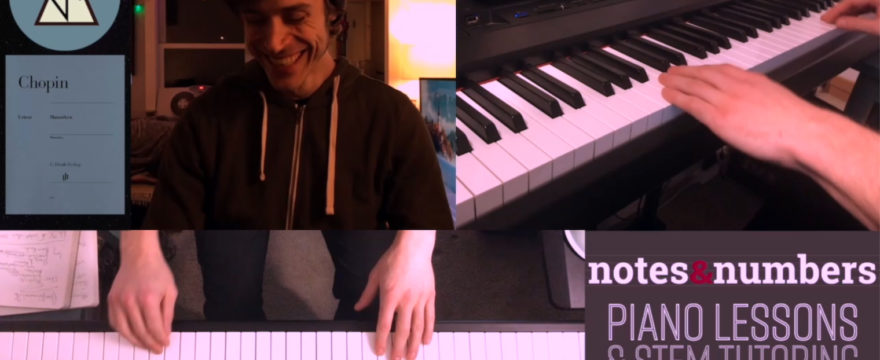(first published by the WSMTA publication ‘The Clarion’, February 2021)
I’ll be the first to admit that the transition to teaching online has been anything but easy. I sauntered into March with lots of big plans that had next to nothing to do with technology of any kind. I certainly didn’t aspire to take on the herculean task of building my own best practices for teaching music online. Now, sussing out plans for 2021, feeling as though a decade has passed, I must confess I’m a full convert.
Yes, the learning, the product research, the organization, the troubleshooting, and the general suite of adjustment and optimization work that goes into building an online studio can feel endless. But the summed result has yielded a connection with my students and their parents that surpasses in depth and quality what I’ve often gotten in person.
Prior to the online era, my time with my students was limited to the lesson. My relationship with their parents was mostly composed of the brief moments at pickup, pleasant but rarely substantial. Group classes and recitals presented opportunities to deepen things somewhat, but for the most part there was still a divide between how things happened in lessons and how things happened at home.
Now we have regular conversations about how well their current setup works, how it could be improved, and what the effects will be on the learning experience. In turn, this has nurtured a burgeoning sense of responsibility for the growth and care of their context in students and parents alike. Further still, the flexibility of being online has allowed me to try things like offering office hours to help with practice technique, something that wouldn’t have happened in a million years prior to our transition online.
Likewise there are infrastructural changes that I adore, not least of which is no driving. As a continuing student myself, I love my lessons about as much as I hate the commute; a great deal. Depending on proximity, dispensing with that travel means there’s as much time as the lesson itself recuperated per student, for them and their parents. Inverting that, for those times when the lesson is forgotten until the last minute? That’s fine, you’re already there.
Another happy consequence is that recitals have become global affairs, to the delight of aunts, uncles, and grandparents nationwide. In my experience, recitals had included a delicate balance of tasks to ensure decent recordings, respectful distribution, and so on to provide access to the fruits of our endeavors. Now they can attend themselves, see it all happen in real time, and celebrate with the rest of us, latency not withstanding.
Finally, I am an unrepentant sentimentalist. I relish the opportunity to capture moments that students and family can treasure for years to come, snapshots of how they became who they’ll become. In service of that I’ve adopted the habit of encouraging my students to maintain a short list of pieces, updating as we go, and taking monthly recordings of those pieces. At least we get an audible record of our progress, and for the best of them we get some really special recordings. With the powers of Zoom and Google Drive combined this has become a snap, all the trouble of an afterthought.
I don’t blame anyone for continuing to rue the arrival of this new normal, but I hope this has helped convince you that there are lights at the end of the tunnel, there’s grass that’s green on the other side, and there’s still a lot of joy and good fortune to be found in our work, even if we must sometimes grapple with the unknown between here are there. Take care, keep trying, we can turn surviving into thriving yet.
